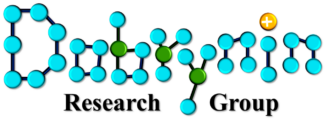Zhen Cao, Mark J. Stevens, Jan-Michael Y. Carrillo, and Andrey V. Dobrynin
We use a combination of the molecular dynamics simulations and scaling analysis to study interactions between gel-like nanoparticles and substrates covered with rectangular shape posts. Our simulations have shown that nanoparticles in contact with substrate undergo a first-order transition between the Cassie–Baxter and Wenzel states, which depends on nanoparticle shear modulus, the strength of nanoparticle–substrate interactions, height of the substrate posts, and nanoparticle size, Rp. There is a range of system parameters where these two states coexist such that the average indentation δ produced by substrate posts changes with nanoparticle shear modulus, Gp. We have developed a scaling model that describes deformation of nanoparticle in contact with patterned substrate. In the framework of this model, the effect of the patterned substrate can be taken into account by introducing an effective work of adhesion, Weff, which describes the first-order transition between Wenzel and Cassie–Baxter states. There are two different shape deformation regimes for nanoparticles with shear modulus Gp and surface tension γp. The shape of small nanoparticles with size Rp < γp3/2Gp–1Weff–1/2 is controlled by capillary forces, while deformation of large nanoparticles, Rp > γp3/2Gp–1Weff–1/2, is determined by nanoparticle elastic and contact free energies. The model predictions are in good agreement with simulation results.

